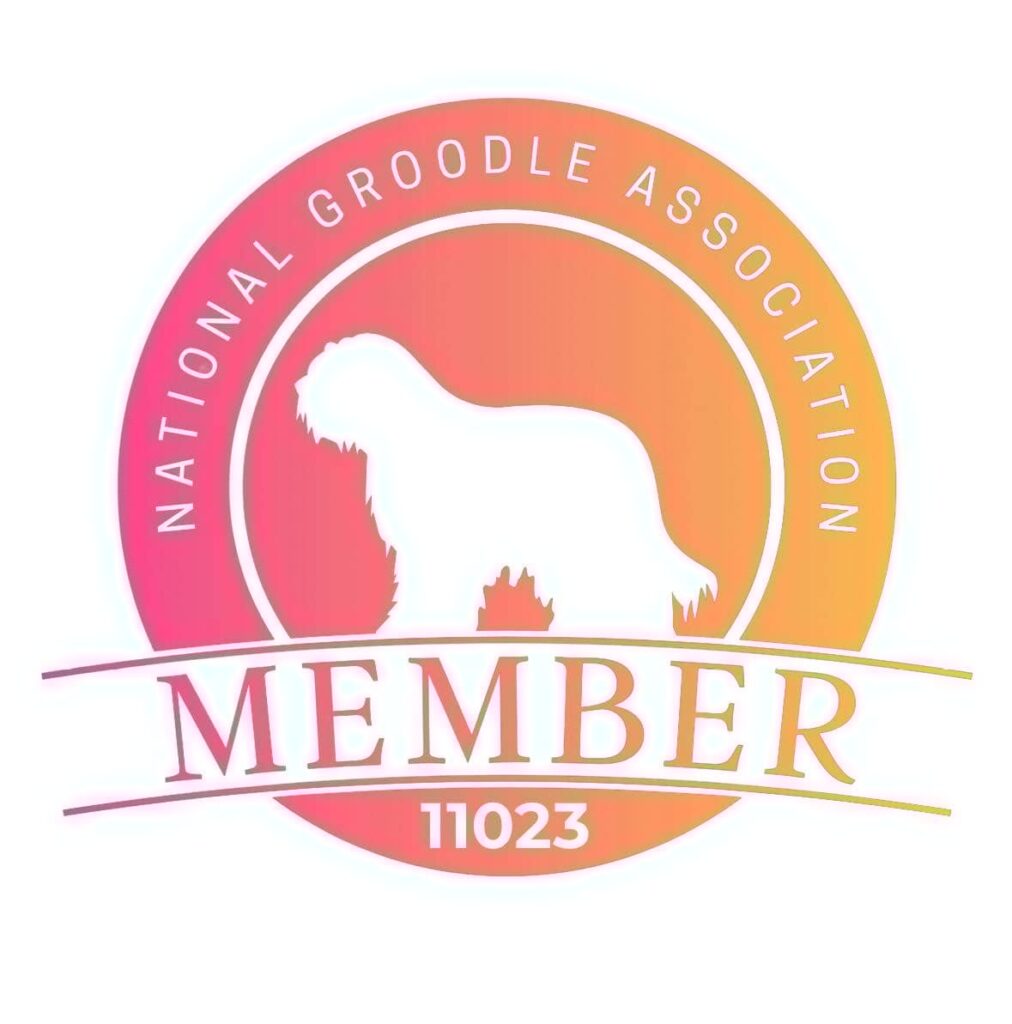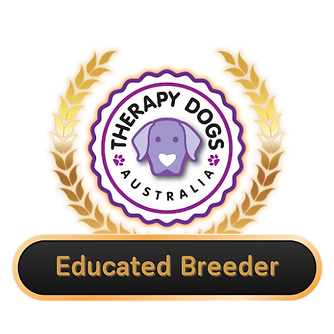Over the years, the popularity of oodle mixes has soared, captivating dog lovers around the globe. These adorable and intelligent hybrids are the result of crossing poodles with other breeds. The diverse range of oodle mixes has led to the emergence of different generations, each with its unique traits and characteristics. In this blog, we will explore the fascinating world of oodle mixes and shed light on the different generations that make them so captivating.
First Generation (F1):
The first generation, also known as F1, results from the direct crossbreeding of a purebred poodle with another purebred breed. For example, when a poodle is bred with a golden retriever, the resulting offspring is called a Groodle (or Goldendoodle in some countries).
F1 Oodle mixes inherit a 50/50 blend of traits from both parent breeds. This generation is often desired for its predictability in terms of size, coat type, and temperament. F1 oodles typically exhibit low shedding or non-shedding coats, making them an excellent choice for those with allergies. With a good understanding of genetics you can ensure you match with the right parents to produce the desirable oodle traits with the best features of the non oodle breed.
F1B:
This is produced by breeding an F1 oodle with a poodle. This backcross is quite common to further ensure a non-shedding coat. You will often get a 50/50 mix of fleece (wavy) and wool (curly) coats and both should be low-no shedding.
F2:
The second generation, or F2, is produced by breeding two F1 oodle mixes together. In F2 crosses, the genetic makeup becomes more diverse due to the increased variation in the parent breeds. This generation allows for greater genetic combinations, resulting in a wider range of traits and appearances. Some F2 oodle mixes may exhibit more consistency in certain characteristics, while others may display more variation, making them an intriguing choice for those seeking a unique companion.
Multigenerational (F2B, F3, F4, etc.):
Multigenerational oodle mixes (F2B, F3, F4, etc.) are created by breeding oodles back to poodles, the base breeds (i.e. golden retriever) or other oodles in subsequent generations. These crosses are designed to establish and stabilize desired traits found in specific lineages. The multigenerational oodles often display more consistency in size, coat type, and temperament than the earlier generations. Their appearance and traits become more predictable, making them a popular choice for those seeking a particular combination of characteristics.
Multigens generally have two oodle parents – One parent has to be an F1B or multigen. Poodle or a Golden Retriever bred to a multigen oodle also constitutes a multigen.
Adapted from The Goldendoodle Association of North America: https://www.goldendoodleassociation.com/about-the-breed/generations/
The History of the Groodle:
The Groodle, also known as the Goldendoodle, is a hybrid dog breed that originated in the late 20th century. The breed is a cross between a Golden Retriever and a Poodle, specifically bred to combine the desirable traits of both parent breeds.
The history of the Groodle / Goldendoodle can be traced back to the rise in popularity of ‘oodle’ breeds in the 1990s. The purpose behind creating the Groodle / Goldendoodle was to produce a dog with the intelligence, temperament, and hypoallergenic coat of the Poodle, along with the friendly and affectionate nature of the Golden Retriever. The breed is also highly sought after for its potential as a therapy or service dog, given its Golden Retriever qualities and hypoallergenic traits.
It is believed that the breeding of Golden Retrievers and Poodles first began in North America, particularly in the United States and Canada. The initial crosses were likely made by individual breeders who wanted to create a new type of family dog that possessed certain characteristics.
The term “Groodle” was coined to describe the breed, combining the names of its parent breeds, the Golden Retriever and the Poodle. The breed quickly gained popularity due to its appealing qualities, including its hypoallergenic coat, intelligence, trainability, and friendly demeanour.
Groodles come in various sizes, from Standard, Medium (or Moyen) and Miniature. In F1 breeds the size is often classified as the size of the poodle used (that’s why you can get some Groodles classified as minis when there is nothing mini about them. Technically it is not incorrect to classify them this way, however it can be a little misleading so be sure to ask about estimated adult size and weight regardless of the size classification of the Groodle.
When breeding multigenerational Groodles, the sizes are generally classified to correspond with approximated adult size and weight as follows:
|
Weight |
Height |
Size |
|
Up to 15kg |
< 35cm |
Miniature |
|
15-25 kg |
30-40 |
Medium |
|
25kg + |
40+ |
Standard |
Please note these are approximations only and different breeders may use different terminology so it’s always good practice to ask the estimated adult size for any litter.
Today, the Groodle is recognized as a popular and sought-after breed. They are known for their friendly and outgoing personalities, making them excellent family pets. Groodles are often used as therapy dogs, assistance dogs, or as companions for individuals with allergies or asthma, thanks to their hypoallergenic coats.
It’s worth noting that the Groodle is not a recognized breed by major kennel clubs like the Australian Kennel Club (AKC) or the Kennel Club (UK). However, various hybrid dog registries do recognise the Groodle as a legitimate breed, however hopefully in the future this will change.
Coat Types:
Groodles can have different coat types, depending on the genetic contributions from their Golden Retriever and Poodle parents. The three main coat types found in Groodles are:
-
Straight (Hair) Coat: This coat type is more similar to the Golden Retriever’s coat. It is typically wavy or straight, with a minimal amount of curl or wave. The straight coat is low to moderate in maintenance and may shed more compared to the other coat types. Regular brushing and grooming are still necessary to keep the coat healthy and free of mats. Generally speaking this is not a desirable Groodle coat and Groodle puppies that have this coat are a result of inexperienced breeders not undertaking or understanding DNA tests for the parents as it is possible to genetically check the furnishings of both parents to ensure a fleece or curly coat. It is possible that weak furnishings may be exhibited in puppies of fully furnished parents but the coat should still mature into a fleece coat in adulthood. See our blog post here for more information on furnishings.
-
Wavy (Fleece) Coat: The wavy coat is a common coat type in Groodles. It features loose curls or waves that give the coat a shaggy appearance. The wavy coat is low to moderate in maintenance and has a tendency to shed less than the straight coat type. Regular grooming and occasional trimming may be required to keep the coat tidy and prevent matting.
-
Curly (Wool) Coat: The curly coat is more similar to the Poodle’s coat. It consists of curls that give the dog a poodle-like appearance. The curly coat is considered the most hypoallergenic and less likely to shed, making it a popular choice for individuals with allergies. However, the curly coat requires more maintenance, including regular brushing and professional grooming, to prevent matting and keep the curls in good condition.
It’s important to note that individual Groodles can have coat variations within these general types. Some may have coats that lean more towards the Golden Retriever side, while others may have coats that resemble the Poodle side, however, all well-bred Groodles should have a low to no shed coat and be fleece or wool.
Additionally, coat colours can vary, including shades of cream, gold, red, chocolate, black, and parti-coloured (a combination of two or more colours) and merle. The exact appearance of a Groodle’s coat can vary widely within the breed.
Conclusion
The world of oodle mixes is a delightful and ever-expanding realm of canine companionship. From the first-generation F1 mixes to the multigenerational oodles and specialised breeds like the Groodle, each generation offers its own set of characteristics and qualities. Whether you’re drawn to the predictability of the F1 or the uniqueness of multigenerational oodles, there is an oodle mix out there to suit every dog lover’s preferences.
Before bringing an oodle mix into your home, it’s essential to do thorough research and consider the specific traits and needs of the individual breed and generation. Remember that each dog, regardless of generation, is a unique individual with its own personality and requirements. Ultimately, whether you choose an F1, F2, multigenerational, or specialised oodle mix, you’re sure to find a loyal, loving, and endlessly charming companion to enrich your life.






